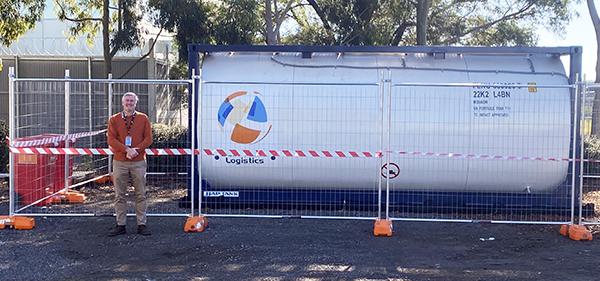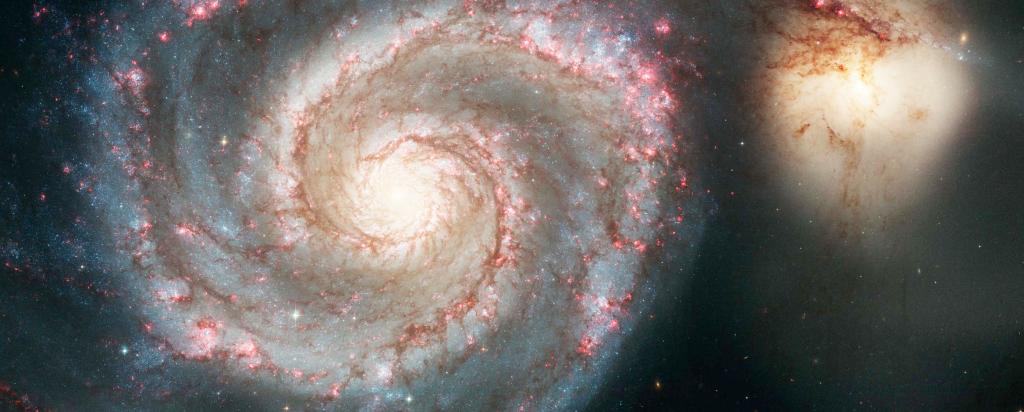

Published on the 31st May 2021 by ANSTO Staff
“The SABRE collaboration is incredibly grateful to ANSTO and its Australian Synchrotron for hosting the solvent tank while the Stawell Underground Physics Laboratory is under construction in 2021,” said from A/Prof Phillip Urquijo, University of Melbourne, one of the Chief Investigators of the ARC Centre of Excellence for Dark Matter Particle Physics.

Dean Morris, Senior Manager, Australian Synchrotron Operations, stands near the 12 tonne tank filled with scintillation fluid for the SABRE dark matter detector
The event ‘veto’ function of the organic solvent, known Linear Alkyl Benzene (LAB),is a key feature that guarantees the background levels of SABRE will be considerably lower than northern hemisphere experiments.
SABRE, the first deep underground dark matter experiment in the Southern Hemisphere, is expected to provide a definitive test of the DAMA/LIBRA result within three years of commencing operation, said Professor Elisabetta Barberio, Director of the ARC Centre of Excellence for Dark Matter Particle Physics.
It will be the first experiment located in the Stawell Underground Physics Laboratory (SUPL), which is currently under construction in the Stawell Gold Mine in Western Victoria.
The SABRE Dark Matter Detector
SABRE stands for Sodium iodide with Active Background Rejection. The detector (see schematic below) will consist of approximately 100 tons of steel and polyethylene shielding, surrounding a 2.6m by 3.1m vessel made from radioactive-free pure steel containing the liquid scintillator.
Immersed in the 12 tonnes of liquid scintillator are the ultra-pure sodium iodide detector crystals which are instrumented to observe dark matter interactions.

Photomultiplier tubes (PMTs), light detectors capable of observing single photons, are independently coupled to both the sodium iodide crystals and the liquid scintillator, in order to sense the light emitted when different types of radiation interact with these detector elements.
Since dark matter interacts so rarely with normal matter, any events where both the liquid scintillator and the sodium iodide simultaneously observe radiation can be rejected, as this will not be a real dark matter event.
The scintillation liquid provides an ‘active veto’ to eliminate background radiation, which will reduce the background count rate significantly over SABRE’s predecessor, the DAMA/LIBRA experiment located in Italy.
To potentially detect dark matter particles, the detector must be protected from all other sources of radiation, as far as possible.
In SUPL, the SABRE detector has three layers of protection:
- An underground location situated over 1km underground in the Stawell Gold Mine, where almost all cosmic ray radiation will be eliminated
- The detector itself will be heavily shielded by around 100 tonnes of steel and polymer shielding
- The liquid scintillator “veto” system to detect and eliminate false signals
The scintillator is based on an organic solvent, Linear Alkyl Benzene (LAB), mixed with fluorescent chemicals.
The ultra-pure LAB has been specially manufactured by the supplier to the JUNO neutrino experiment through a collaboration with the Institute of High Energy Physics in Beijing.
The transportation tank is stainless steel, cleaned with de-ionised water and purged with nitrogen to ensure no exposure to oxygen.




